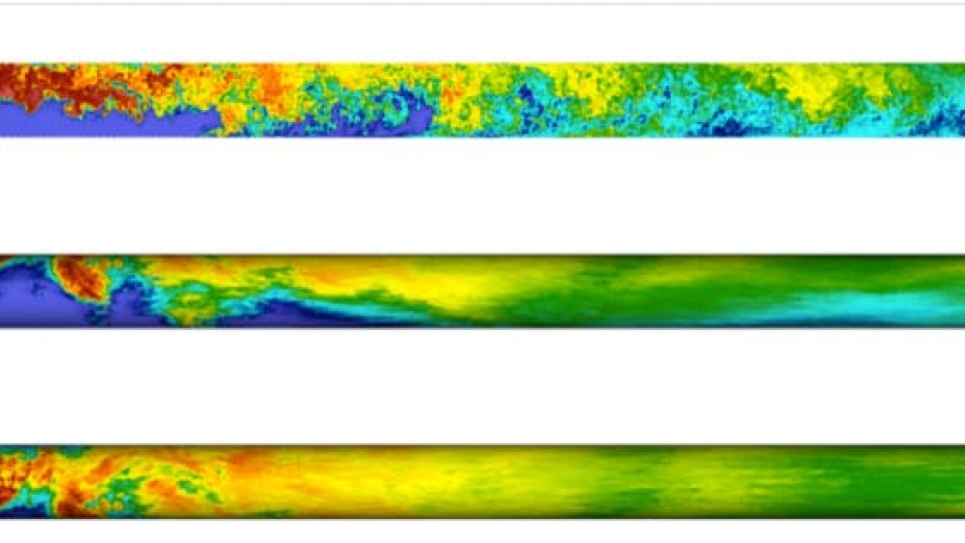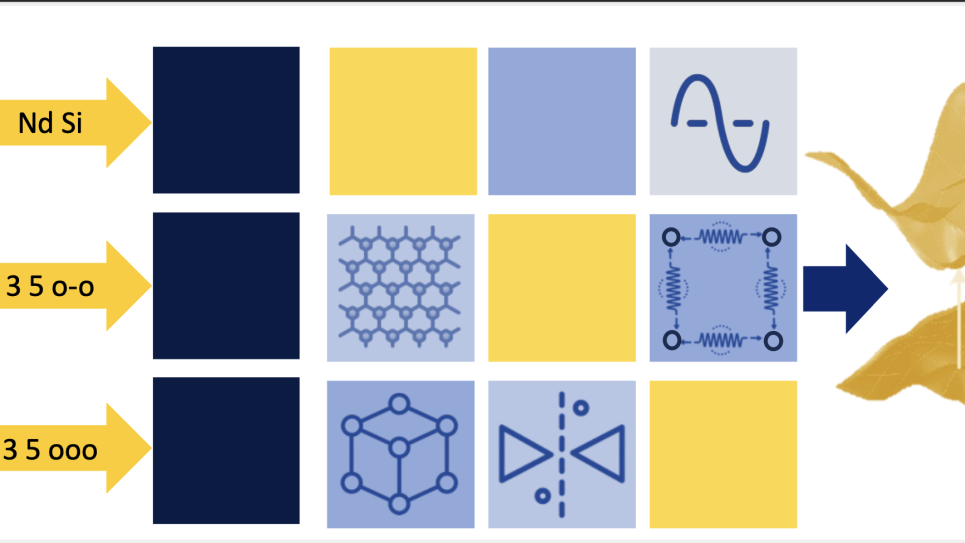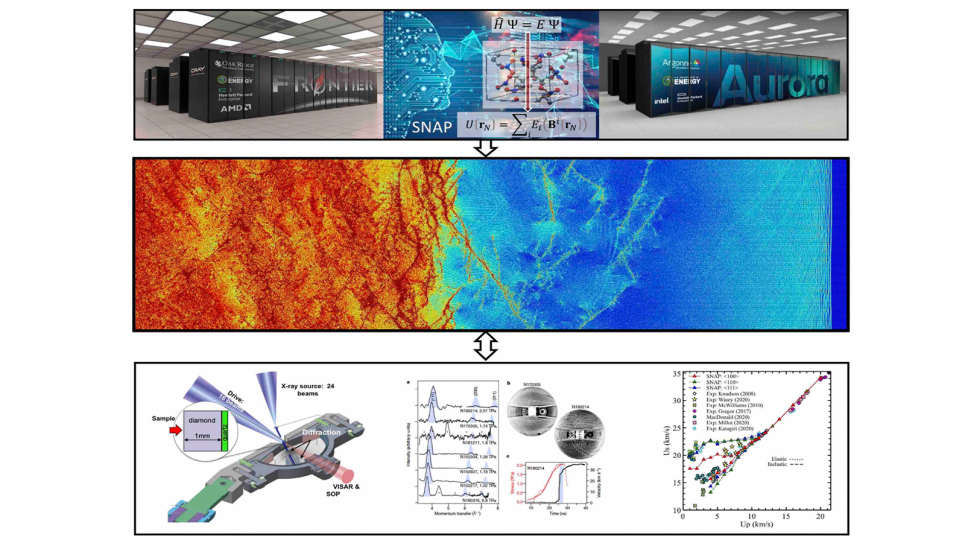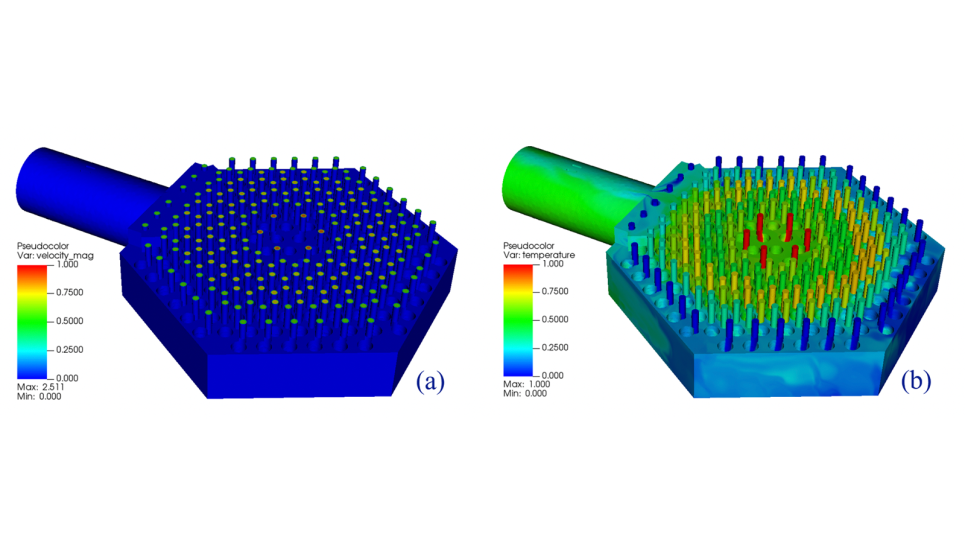
Advanced Reactor Thermal Hydraulic Modeling
The DOE Nuclear Energy Advanced Modeling and Simulation (NEAMS) program is developing simulation capabilities to leverage U.S. leadership computing facilities in the design of next-generation nuclear reactors capable of providing sustainable energy with a low carbon footprint. One active area of research is the Advanced Fuel Cycle Initiative (AFCI), which is examining a closed nuclear fuel cycle based on a new generation of fast neutron reactors specifically designed for the transmutation of spent nuclear fuel to address nuclear waste management concerns. Partitioning and transmutation of transuranic elements from nuclear spent fuel is considered as a way of reducing the burden of geological disposal.
Advanced simulation is viewed as critical in bringing fast reactor technology to fruition in an economic and timely manner, and the DOE has recently established area-specific campaigns to look at open questions in closing the fuel cycle. Analysis of fast reactor cores is one of the areas of interest, and the thermal-hydraulic performance—pressure drop and mixing induced by the coolant flow—figures prominently in design questions.
In accordance with the original proposal, the team has already undertaken a series of computational studies of fluid and heat transfer flows aimed at the validation of LES Nek5000 high Reynolds-number capability for thermal hydraulics phenomena emerging in design and analysis of future generations of nuclear power plants. Since the focus of the team’s NEAMS funding has been changed from sodium fast reactors to technology neutral analysis, 2012 research plans have also adjusted slightly. The team will finish its 37-pin rod bundle simulation with and without wire-up and move to the 25-pin study for the 2012 OECD/NEA benchmark problem (MATIS) for spacer grid analysis. Planned INCITE work for 2012 includes: 1) a comparative study of 37-pin rod bundles with wire wrap, bare rod, and spacer grids to contrast with the conducted study of a single pin in a periodic array; 2) 25-pin study for 2012 MATIS benchmark problem for spacer grid analysis. Between 500-1,000 million grid points and 15 million hours are estimated for the MATIS case.


